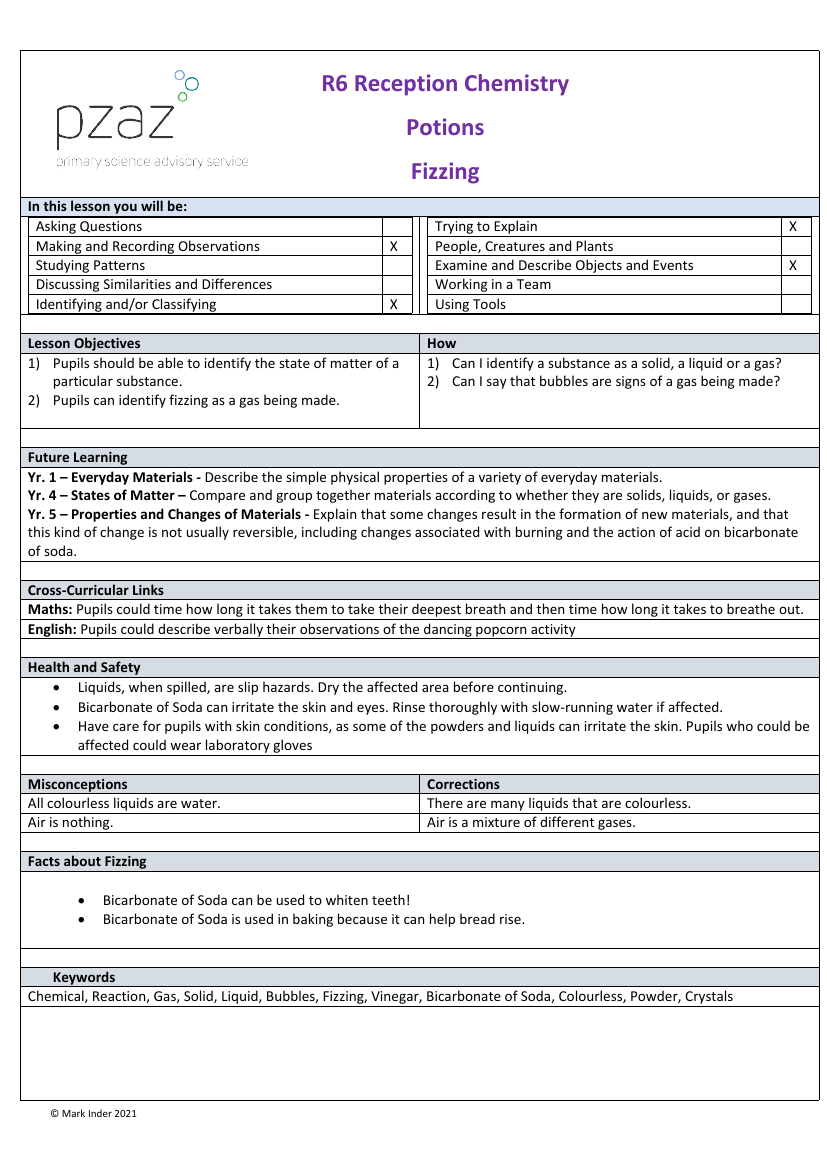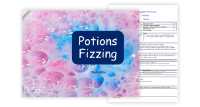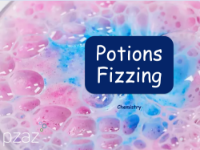Fizzing - Lesson Plan

Science Resource Description
This lesson plan, designed for a primary school science class, explores the fascinating world of fizzing through a series of interactive activities. The objectives are for pupils to understand the states of matter and identify fizzing as a sign of gas production. Starting with an experiment using straws and water, students observe their own breath and learn that air, a type of gas, causes bubbles. This concept is expanded upon with the 'Magical Dancing Popcorn' activity, where vinegar and bicarbonate of soda demonstrate a chemical reaction that produces carbon dioxide gas, causing popcorn to move. The lesson also includes examining and classifying different substances like salt, sugar, and cornflour, and observing their reactions with vinegar to further understand fizzing.
Later, the 'Mystery Chemical' activity challenges students to deduce which solutions contain bicarbonate of soda based on the fizzing reaction with vinegar. Additionally, the 'Citrus Volcanoes' experiment uses lemons and oranges to show how citric acid reacts with bicarbonate of soda to create gas. To make learning even more delicious, the 'Making Sherbet' activity allows pupils to mix citric acid, bicarbonate of soda, icing sugar, and jelly crystals to create a fizzy treat. Each activity is accompanied by questions that encourage critical thinking and observation. The lesson plan also addresses potential misconceptions, such as the idea that all colourless liquids are water or that air is 'nothing', and includes important health and safety considerations. This engaging lesson not only covers the science curriculum but also integrates with other subjects like maths and English, providing a cross-curricular learning experience.


